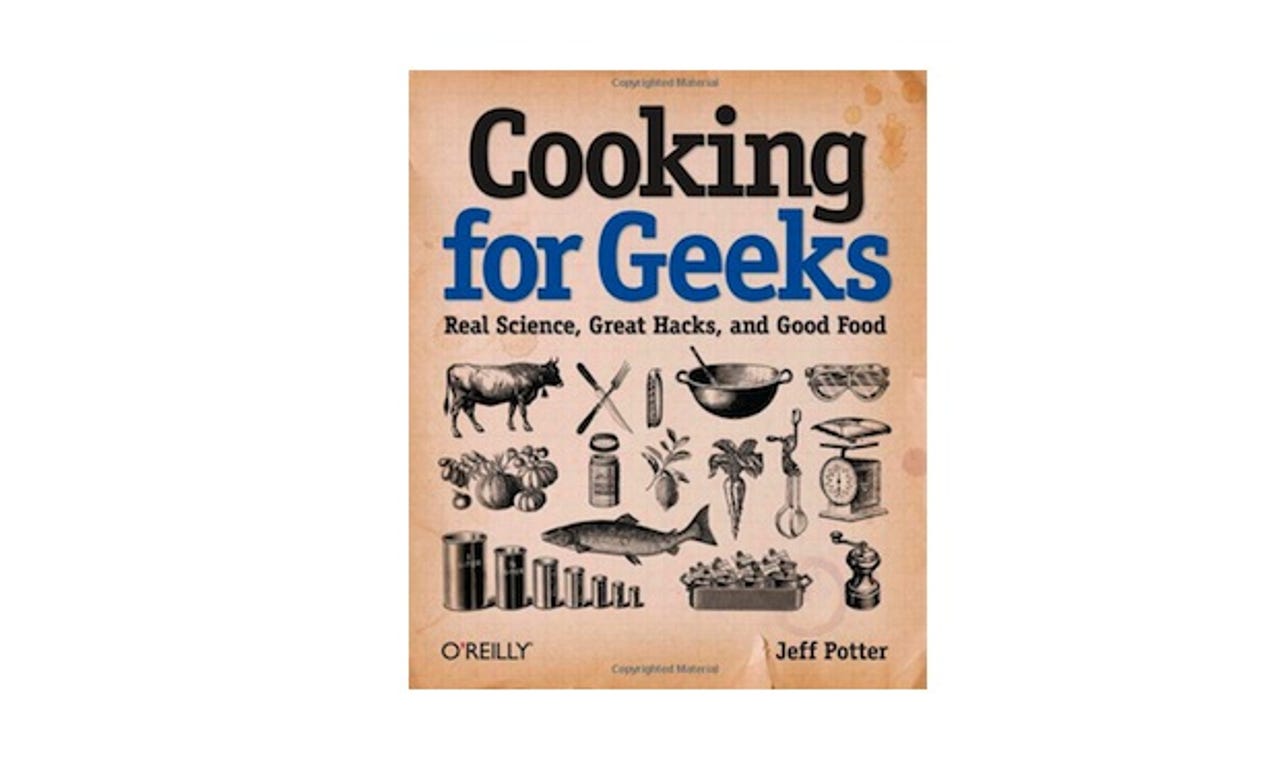Book review: Cooking for Geeks

Cooking and geekery should go together like strawberries and cream or bacon and chocolate. A recipe is just an algorithm, but few cookbooks do the equivalent of defining standards and functions — like telling you why you don't want to over-mix pancakes (cross-linked strands of glutenin and gliadin from the flour will make the pancakes chewy), or what temperature a hot frying pan should actually be (154 degrees C for the Maillard reaction, 180 degrees for caramelisation and browsing). Cooking for Geeks tells you what matters in cooking and why, but it's more fun and more geeky than that.
This is actually two books in one. Most of it covers the physics, chemistry and biology of cooking: it explains, for example, that sugar in ice cream lowers the temperature at which it freezes; that you need to stir ice cream as it freezes to avoid large ice crystals; and that melted ice cream tastes much sweeter because you can't taste the sugar as much when your tongue is cold.

There are chapters on equipment, key techniques (including food safety), experimenting with tastes and combinations and understanding the variables in baking. They're crammed with explanations, ideas, interviews and recipes and you could quite happily cook your way from duck ragout to seared tuna to buttermilk pancakes (Cooking for Geeks does have a rather American flavour), learning as you go. Celebrity recipes come from celebrity geeks (garlic rosemary roasted potatoes from the founder of Flickr anyone?) as well as cookery experts. Although the recipes range from simple to long and involved, the explanations are clear and Potter encourages you to 'debug' your cooking by changing one variable at a time. This is the innate geekery of cooking and will appeal most to cooks who wonder why recipes work.
But the fun starts when Potter starts on more unusual equipment, ingredients and techniques. Don't have an ice cream maker? Build one out of Lego bricks, or use liquid nitrogen. Create bacon-flavoured bourbon using bacon fat, bourbon, an immersion blender, a freezer and any 20-micron filter (a good paper coffee filter will do). Use a 3D printer like the MakerBot Cupcake to make Tux moulds for seasonal Linux cookies. Want to try molecular gastronomy, Heston Blumenthal style? Potter covers commercial additives like lecithin (foam), methylcellulose (hot ice cream), maltodextrin (turns fat and fatty liquids into powder, so you can turn peanut butter, cheese, olive oil or pesto into a powder), miraculin (from the miracle berry, which makes sour things taste sweet) and agar (ideal for alcoholic jelly shots), explaining how they work, how to use them — and where to order them online.
Temperature-controlled sous-vide cooking needs expensive equipment — or you could make your own from a slow cooker, a thermocouple and a temperature controller using the instructions here (and yes, you can use Ziploc-style resealable bags if you don't want to buy a vacuum sealer). Potter also covers what foods are worth cooking sous-vide (meat, fish and chicken) and which aren't (vegetables) and gives some tips on using the technique alongside regular cooking methods, doing it safely — and for making chocolate bars with it.
He also covers using liquid nitrogen (again, with invaluable safety tips, like remembering even the empty bowl will be cold enough to shatter a worktop). If that's a little too extreme you can use dry ice. A nitrous oxide cream whipper can also be used to make chocolate mousse, or to whip the ingredients for microwave chocolate cake so they rise more. Potter cautions against some of the riskier extreme cooking ideas; you can electrocute a hot dog to cook it, but you're more likely to electrocute yourself. Adam Save's dynamite-tenderised steak is more of a salutary warning than a recipe. And while you can overclock your oven and break the lock to bake pizza at a near-perfect 800 Fahrenheit using the cleaning cycle, you might also have to replace the oven glass with something like Pyroceram (used for the nose cone of missiles) so he shows some more practical alternatives to get that temperature using a pre-heated cast-icon frying pan and your grill.
Some of these recipes and techniques you'll want to try; some are just fun to read about. Most of them will make you want to play with food.
Cooking for Geeks: Real Science, Great Hacks, and Good Food By Jeff Potter O'Reilly Media 432 pages ISBN:978-0-596-80588-3 £26.99
Mary Branscombe